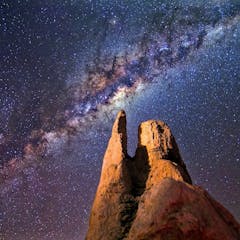
Articles on Science communication
Displaying 1 - 20 of 304 articles

The study analyses the social media feeds of three science journalism websites: Bhekisisa, SciBraai and The Conversation Africa.

Use-inspired research goes beyond translational research to build lasting connections between researchers and communities.

This bias in science journalism seems not to be due only to pragmatic concerns about time zones or the language spoken in the country where the scientist is based.

Eclipses have inspired myths, predictions and scientific discoveries. The total solar eclipse occurring on April 8 provides a once-in-a-lifetime opportunity to engage with science and the cosmos.

Researchers want real-world impact. Lawmakers want programs that work. The public wants to benefit from taxpayer-funded research. Building a bridge from academia to legislatures is key to all three.

The logic of shared birthdays is stranger than you might think, but learning to understand counter-intuitive mathematics is key to seeing the world clearly.

Studies show that health misinformation on social media has led to fewer people getting vaccinated and more lives lost to COVID-19 and other life-threatening diseases.

Science communication has to start with values – and most of the time it does.

Conversations about scientific research and technological innovations allow the public to build trust with experts, and understand the impacts on everyday lives.

A calm voice, a trusted expert, devoted teacher. Epidemiologist Professor Mary-Louise McLaws was passionate about engaging with the mainstream media and communicating what she knew.

Public data about individual donors’ political contributions supports the perception that American academia leans left.

Mary Anning, Thomas Bopp and Ben Bacon are just a few of the nonprofessionals who pushed the frontiers of science.

Traditional research outputs like journal articles don’t often give voice to communities’ stories.

Inspiring our children to value and connect with science is key to improving society – and there are ways to do this safely in the classroom.

Preprints are often free to use, making them more accessible for journalists to report on. However, as they have yet to undergo peer review, science journalists take a gamble on their accuracy.

There never was a ‘maximum bill of £2,500’.

A microscope slide that can diagnose cancer, mapping how what we eat affects the environment, and an effort to track bushfire damage are among the winners at Australia’s leading scientific awards.

The annual Pitch it Clever prizes, awarded by Universities Australia, celebrate the work of three emerging researchers. These are the 2022 winners.

Journalists may unwittingly perpetuate the notion that men are the only experts worth listening to. This limits the visibility of women in science.

Poetry might seem like an odd way to communicate science research but the literary form can help engage a wide group of people
